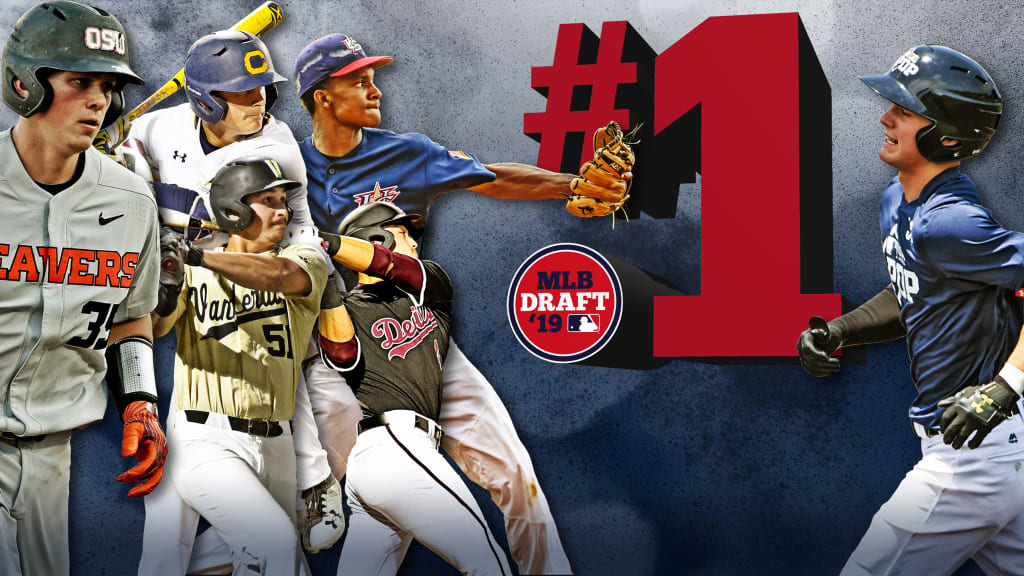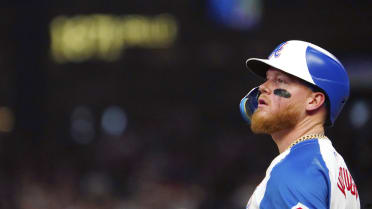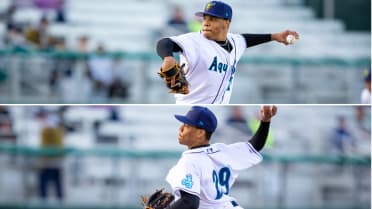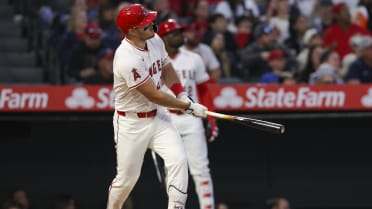
The Orioles have had the No. 1 pick in the Draft just once in the organization’s history. That was back in 1989 when they took LSU right-hander Ben McDonald, who went on to pitch for parts of seven seasons in Baltimore.
But while the Orioles don’t have much experience with picking at the top, the man they hired to be general manager has more than a little familiarity with the pressure of picking 1-1. Mike Elias was the Astros’ scouting director when they had the first pick of the Draft three years in a row. He’s learned from what worked (Carlos Correa) and what hasn’t (Mark Appel, Brady Aiken) and is ready to take those lessons into this year’s Draft.
“I feel I have an uncommon level of experience with high Draft picks with what we went through in the Houston rebuild,” said Elias, who also saw the Astros pick No. 2 in 2015 (Alex Bregman). “Overall, we did very well with our picks, but he had some failure. Learning from both, we can bring those experiences to Baltimore. We’re going in-depth, we’re spending time with players face to face, we’re pulling information from all angles. It’s an experience we’re comfortable with, we know how to apply information and have been doing so with this Draft class.”
He and the Orioles scouting staff have been applying it to what they feel is a solid crop of candidates to choose from. Elias obviously wasn’t ready to pronounce who the pick will be -- after all, no one knew who the Astros were taking No. 1 overall until right before they made the pick -- but they have worked to narrow down the field.
“Generally speaking, we’re pleased with the options at the top of the Draft,” Elias said. “There are a lot of good college hitters. That pool has expanded this spring. We have athletic middle-of-the-diamond high school players and some college arms who are having good seasons. We’re happy with the pool. We’ll keep looking at the players until the bell rings on June 3.”
It’s likely going to be all about the bats for the Orioles when it comes down to decision time, with what looks like six potential candidates, all hitters, in the mix. As for those college pitchers, TCU lefty Nick Lodolo and West Virginia right-hander Alek Manoah will likely be monitored, but it’s hard to envision a scenario where they figure into the top-pick conversation. There aren’t any high school arms who are close to top of the Draft consideration.
Not that Elias tipped his hand at all, but some of the hitters seem more likely than others, so let’s break them down into tiers.
The favorite
Adley Rutschman, C, Oregon State (No. 1 on Draft Top 100): Rutschman entered the spring as the top player on pretty much every Draft board, and he’s done nothing to change that, with a gaudy .429/.576/.805 line for the Beavers. He’s an advanced bat who has walked more than he’s struck out in his college career, with his power really showing up (16 homers this year), a big reason why he has a 60 grade (on the 20-to-80 scouting scale). He has two more plus grades defensively, getting 60s on both his overall catching and his arm. He is arguably the best all-around college catcher in a Draft class since Buster Posey (2008) or Matt Wieters (2007).
Contenders
Andrew Vaughn, 1B, Cal (No. 3): He won the Golden Spikes Award last year as an underclassman and could be a contender again. The first baseman has hit .376/.530/.711 with 13 homers and more walks than strikeouts. Like Rutschman, Vaughn garners 60s for his hit and power tools. He doesn’t expand the zone, even when he gets pitched around, and doesn’t sell out for power or sacrifice it to make contact. The one thing not working in his favor is that he is a first baseman only, as opposed to Rutschman or the two high schoolers on this candidates list, all of whom play up the middle.
Bobby Witt Jr., SS, Colleville Heritage HS, Texas (No. 2**)**: He’s been at No. 2 behind Rutschman since MLB Pipeline put out its Top 50 list last December. The Texas prepster, whose father pitched in the big leagues for 16 years, has the potential to be a five-tool shortstop, the kind of player who doesn’t come around very often. His power was on display all summer, and there were some who were initially worried he was too aggressive at the plate, but he’s generally assuaged those concerns with his overall ability at the plate. He can undoubtedly stay at shortstop and has the speed to be a potential 20-20 player, one with plus makeup and a passion for the game that shows on the field.
CJ Abrams, SS, Bessed Trinity Catholic HS, Ga. (No. 4): In terms of speed and overall athleticism, Abrams measures up to anyone in this Draft class. His near-top-of-the-scale speed (75) should make him a big-time basestealer, and while he’s not a huge power guy, he’s added some strength and he’s an outstanding hitter. There’s a split camp about where he lands defensively, but that doesn’t impact his value much. Those who don’t think he can stick at shortstop believe he could be an outstanding defender in center field, a spot he played for Team USA in deference to Witt at the Pan American Games.
Dark horse
Hunter Bishop, OF, Arizona State (No. 7): One of two college outfielders to hit their way up close to the top of Draft boards this spring, Bishop has a chance to be a better all-around player than his older brother Braden, who is a solid prospect in the Mariners system. Hunter has plus raw power that really started showing up consistently in games this year for the first time, as evidenced by his 19 home runs. Though he’s big, at 6-foot-5, he’s very athletic, and scouts have been impressed with his work in center field, especially considering this is his first time playing there full-time, giving him the chance to stay up the middle. On the down side, Bishop hasn’t been nearly as successful within the Pac-12 (.284/.416/.578).
Long shot
JJ Bleday, OF, Vanderbilt (No. 5): The Division I leader in home runs with 23, Bleday has a better track record as a hitter than Bishop. His power really started showing up over the summer on the Cape Cod League and obviously has continued this spring. He’s hit .300/.443/.722 in the SEC with 11 of those homers, but he’s a corner outfielder only, albeit one with a strong arm that should work from right field.
Jonathan Mayo is a reporter for MLBPipeline.com. Follow him on Facebook and @JonathanMayo, and listen to him on the weekly MLB Pipeline Podcast.




